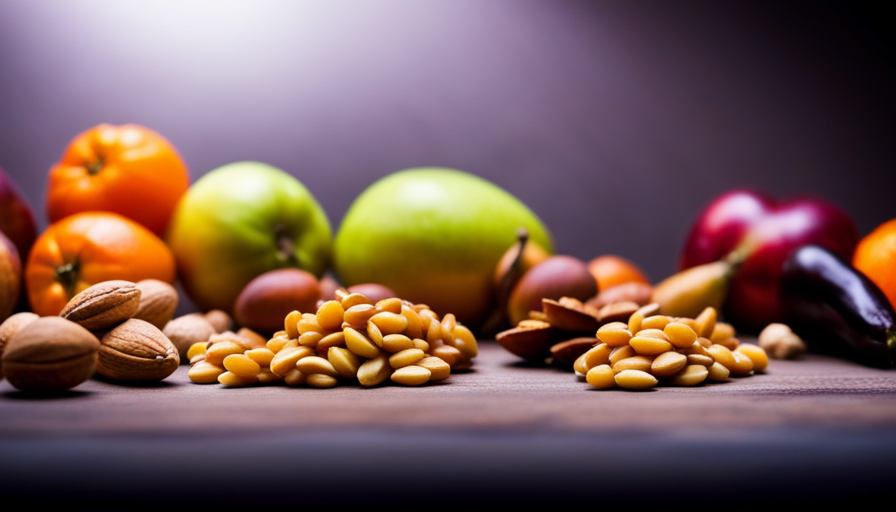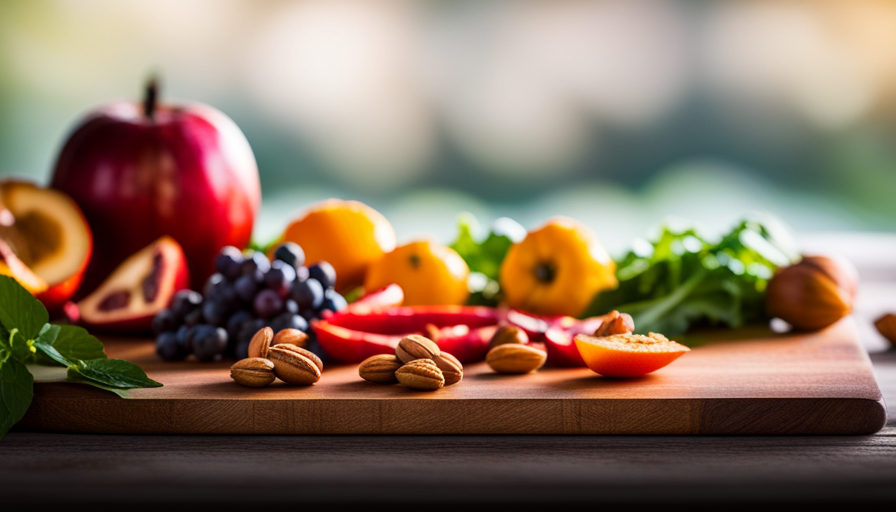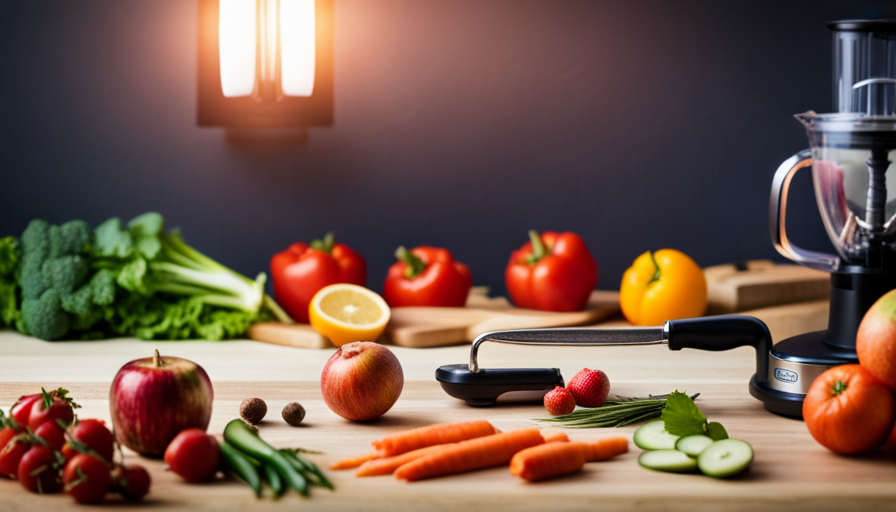Are you prepared to start a journey that will enhance your health and energy levels? If the answer is yes, then you have come to the right place. Welcome to the realm of the raw food diet, a way of life that utilizes the benefits of natural, unprocessed foods to fuel your body from within.
Imagine a world where every bite you take is bursting with vibrant flavors, rich nutrients, and life-giving enzymes. This is the essence of the raw food diet, a way of eating that embraces the beauty and simplicity of nature’s bounty.
In this article, we will explore the wide array of delicious and nutritious foods that you can enjoy on a raw food diet. From luscious fruits and crisp vegetables to creamy nuts and seeds, the possibilities are endless.
We’ll delve into the world of sprouts, raw dairy, fermented foods, and even discuss the controversial topic of raw meat and seafood. And of course, we can’t forget about indulging in raw desserts and snacks that will satisfy your sweet tooth without compromising your health goals.
So, whether you’re a seasoned raw food enthusiast or just curious about this lifestyle, get ready to discover the incredible array of foods that can nourish and invigorate your body on a raw food diet.
Let’s dive in and explore the wonders of this transformative way of eating.
Key Takeaways
- The raw food diet emphasizes natural, unprocessed foods such as fruits, vegetables, nuts, seeds, sprouts, and raw dairy products.
- Raw desserts and snacks made from wholesome ingredients like raw cacao powder, dates, nuts, and coconut provide a healthier alternative to traditional sweets and snacks.
- Raw desserts and snacks are rich in vitamins, minerals, antioxidants, and fiber, supporting a healthy immune system, digestion, and protecting against chronic diseases.
- Raw nuts, seeds, and energy balls made from dates, nuts, and coconut are convenient, satisfying snacks that keep you feeling full and provide sustained energy.
Fruits and Vegetables
You can enjoy a colorful array of juicy fruits and crisp vegetables bursting with flavors that’ll make your taste buds dance on a raw food diet.
Fruits and vegetables are the foundation of this diet, providing essential nutrients and antioxidants. Incorporating fruit smoothie recipes into your daily routine is a great way to start your day with a boost of vitamins and minerals. Whether it’s a refreshing blend of berries, a tropical medley of pineapple and mango, or a creamy concoction of avocado and banana, the possibilities are endless. Not only are these smoothies delicious, but they also provide a concentrated source of nutrients that’re easily absorbed by the body.
In addition to the delicious fruit smoothies, a vegetable-rich diet offers numerous benefits. Vegetables’re low in calories and high in fiber, making them a perfect choice for weight management. They’re also packed with vitamins, minerals, and phytochemicals that support overall health and well-being. Research has shown that a diet rich in vegetables can reduce the risk of chronic diseases, such as heart disease, diabetes, and certain types of cancer.
As we transition into the next section about nuts and seeds, it’s important to note that they’re an excellent source of healthy fats, protein, and essential nutrients.
Nuts and Seeds
Indulge in the rich and satisfying flavors of crunchy nuts and seeds, bursting with wholesome goodness and an explosion of natural energy! Including nuts and seeds in a raw food diet isn’t just delicious but also provides numerous health benefits. Here are four reasons why you should consider adding them to your meals:
-
Heart-healthy fats: Nuts and seeds are packed with monounsaturated and polyunsaturated fats, which can help lower bad cholesterol levels and reduce the risk of heart disease.
-
Nutrient powerhouses: Nuts and seeds are a great source of vitamins, minerals, and antioxidants. They contain essential nutrients like vitamin E, magnesium, zinc, and omega-3 fatty acids, which support overall health and well-being.
-
Energy boosters: Nuts and seeds are high in protein, fiber, and healthy fats, making them a perfect snack for sustained energy throughout the day. They can keep you feeling full and satisfied, preventing unhealthy cravings.
-
Versatile ingredients: Get creative with your raw food recipes by incorporating nuts and seeds. You can use them in smoothies, salads, dressings, desserts, or even as a crunchy topping for your favorite dishes.
Incorporating nuts and seeds into your raw food diet not only adds flavor and texture but also provides a wide range of health benefits. Now, let’s move on to the next section and explore the wonders of sprouts.
Sprouts
Explore the vibrant world of sprouts and let their fresh, crisp texture and vibrant flavors awaken your taste buds to a whole new level of culinary delight. Growing your own sprouts is a simple and rewarding way to incorporate these nutritional powerhouses into your raw food diet. Sprouts are packed with essential nutrients like vitamins, minerals, and enzymes that are easily absorbed by the body. They are also low in calories and high in fiber, making them an excellent addition to any meal.
One of the key benefits of incorporating sprouts into your raw food diet is their ability to support digestion. The enzymes present in sprouts help break down food more efficiently, aiding in the absorption of nutrients and reducing bloating and discomfort. Additionally, sprouts are rich in antioxidants, which can help protect against oxidative stress and inflammation.
To highlight the versatility of sprouts, consider the following table:
| Sprout Type | Flavor Profile | Nutritional Benefits |
|---|---|---|
| Alfalfa | Mild and nutty | High in vitamin C |
| Broccoli | Earthy and | Rich in antioxidants |
| slightly bitter | ||
| Radish | Peppery and | Good source of |
| spicy | vitamin B6 | |
| Sunflower | Nutty and | High in vitamin E |
| slightly sweet |
Incorporating sprouts into your raw food diet not only adds variety and flavor to your meals but also provides a range of health benefits. Now, let’s move on to the next section about raw dairy and fermented foods to further enhance our raw food journey.
Raw Dairy and Fermented Foods
Discover the creamy richness and tangy flavors of raw dairy and fermented foods, taking your taste buds on a delectable journey of probiotic goodness.
Raw dairy products, such as milk, cheese, and yogurt, offer numerous health benefits. They’re rich in essential nutrients like calcium, vitamins, and minerals. Raw dairy also contains beneficial bacteria that aid digestion and support a healthy gut.
Fermented foods, like sauerkraut, kimchi, and kefir, are teeming with probiotics, which promote a balanced gut microbiome and boost the immune system.
Incorporating raw dairy and fermented foods into a raw food diet is relatively straightforward. Start by sourcing high-quality, organic raw dairy products from trusted sources. Look for local farmers who follow proper hygiene practices and ensure their cows are grass-fed.
When it comes to fermented foods, you can easily make your own at home or find them at health food stores. Experiment with different flavors and textures to find what suits your palate.
Now, let’s transition into the next section about raw meat and seafood, where we explore the protein-packed options available on a raw food diet.
Raw Meat and Seafood
Sink your teeth into the savory and succulent offerings of raw meat and seafood, experiencing the vibrant colors and textures that come alive on your plate. While the idea of consuming raw meat and seafood may seem unconventional, it’s actually a common practice in many cultures around the world.
When it comes to raw meat, it’s important to choose high-quality, fresh cuts. Popular options include beef, lamb, and fish like salmon and tuna. To ensure safety, it’s crucial to follow proper handling and storage techniques. Freezing the meat for a certain period of time can also help kill any potential parasites.
As for seafood, options like sushi-grade fish, oysters, and shrimp can be enjoyed raw. The cooking methods for raw meat and seafood in a raw food diet involve marinating, curing, or simply consuming them as they are.
Including raw meat and seafood in your diet can provide numerous health benefits, such as increased nutrient intake and improved digestion.
Now, let’s transition to the next section about raw desserts and snacks.
Raw Desserts and Snacks
Indulge in the delectable world of raw desserts and snacks, where sweetness and healthiness collide in a surprising twist.
Raw dessert recipes are a wonderful way to satisfy your sweet tooth while sticking to a raw food diet. These desserts are made from unprocessed, natural ingredients like fruits, nuts, and seeds, which retain their nutrients and enzymes.
One popular raw dessert recipe is raw chocolate avocado pudding, which combines the creaminess of avocados with the richness of raw cacao powder. It’s a guilt-free treat that’s packed with antioxidants and healthy fats.
Raw snacks are also a great addition to a raw food diet. They provide a quick and convenient source of energy and can be enjoyed on the go. Raw nuts and seeds, such as almonds and pumpkin seeds, are excellent options for snacking. They’re high in protein, healthy fats, and fiber, which help keep you feeling full and satisfied.
Raw energy balls made from dates, nuts, and coconut are another popular choice. They’re easy to make and can be customized with your favorite flavors and add-ins.
In addition to their delicious taste, raw desserts and snacks offer numerous health benefits. Since they’re made from whole, unprocessed ingredients, they’re rich in vitamins, minerals, and antioxidants. These nutrients support a healthy immune system, promote digestion, and protect against chronic diseases.
Raw desserts and snacks are also often low in added sugars and free from artificial additives, making them a healthier alternative to traditional sweets and snacks.
Raw desserts and snacks are a delightful and nutritious addition to a raw food diet. With a wide variety of delicious recipes to choose from, you can satisfy your cravings while nourishing your body with wholesome, unprocessed ingredients. So go ahead, indulge in the sweet and healthy world of raw desserts and snacks!
Frequently Asked Questions
Can I still consume cooked vegetables on a raw food diet?
Yes, you can still consume cooked vegetables on a raw food diet. However, it’s important to note that the main focus of this diet is on consuming uncooked foods. While cooking vegetables can lead to a loss of certain nutrients, it can also increase the availability of others. However, the benefits of a raw food diet include increased nutrient intake, improved digestion, and weight loss. Incorporating both raw and cooked vegetables can provide a balanced approach to this diet.
Is it necessary to soak nuts and seeds before consuming them on a raw food diet?
Soaking nuts and seeds before consuming them on a raw food diet is like giving them a rejuvenating spa treatment. Soaking methods, such as overnight soaking or sprouting, have several benefits.
Firstly, they help to remove enzyme inhibitors, making the nuts and seeds easier to digest. Secondly, soaking increases their nutrient availability and enhances their flavor.
So, it’s indeed necessary to soak nuts and seeds before enjoying them on a raw food diet.
Can I eat canned sprouts on a raw food diet?
Yes, you can eat canned sprouts on a raw food diet. Canned sprouts offer numerous benefits. They’re a great source of essential vitamins, minerals, and antioxidants. Sprouts are known to boost digestion, support immune function, and promote healthy skin. They’re also low in calories and high in fiber, making them a nutritious addition to any raw food diet. However, it’s important to check the ingredients and ensure that the sprouts are truly raw and not cooked or processed.
What are some examples of raw dairy alternatives for those on a raw food diet?
Raw dairy alternatives are a great option for those following a raw food diet. They offer similar benefits to traditional dairy products without the risks associated with consuming raw milk.
Some examples of raw dairy alternatives include almond milk, coconut milk, and cashew milk. These plant-based alternatives are not only rich in nutrients, but they also provide a creamy texture that can be used in a variety of recipes.
Incorporating these alternatives into your raw food diet can help you enjoy the benefits of dairy without compromising your health.
Are there any specific guidelines for safely consuming raw meat and seafood on a raw food diet?
When it comes to safely consuming raw meat and seafood on a raw food diet, there are specific guidelines that should be followed to ensure safety.
It is important to source high-quality, fresh, and properly handled animal products from reputable sources.
Additionally, it is crucial to practice proper food handling and storage techniques to minimize the risk of foodborne illnesses.
Incorporating raw animal products can provide beneficial nutrients like essential amino acids, healthy fats, and vitamins.
However, it’s important to prioritize safety precautions to minimize the risk of foodborne illnesses.
Is Cheese Included in a Raw Food Diet and What Other Foods Can I Eat?
Yes, cheese is generally excluded from a raw food diet. However, there are alternative options such as nut-based cheeses made from ingredients like cashews and almonds. Other foods that are commonly included in a raw food diet are fruits, vegetables, sprouted grains, and seeds.
Conclusion
In conclusion, a raw food diet offers a wide variety of delicious and nutritious options to fuel our bodies. By focusing on fruits, vegetables, nuts, seeds, sprouts, raw dairy, fermented foods, and even raw meat and seafood, we can enjoy a diverse array of flavors while reaping the health benefits of a nutrient-rich diet.
Did you know that a study published in the Journal of Nutrition found that individuals following a raw food diet experienced significant weight loss and improvements in blood pressure and cholesterol levels? This statistic highlights the potential transformative effects of embracing a raw food lifestyle, encouraging us to consider this approach for our own health and well-being.










